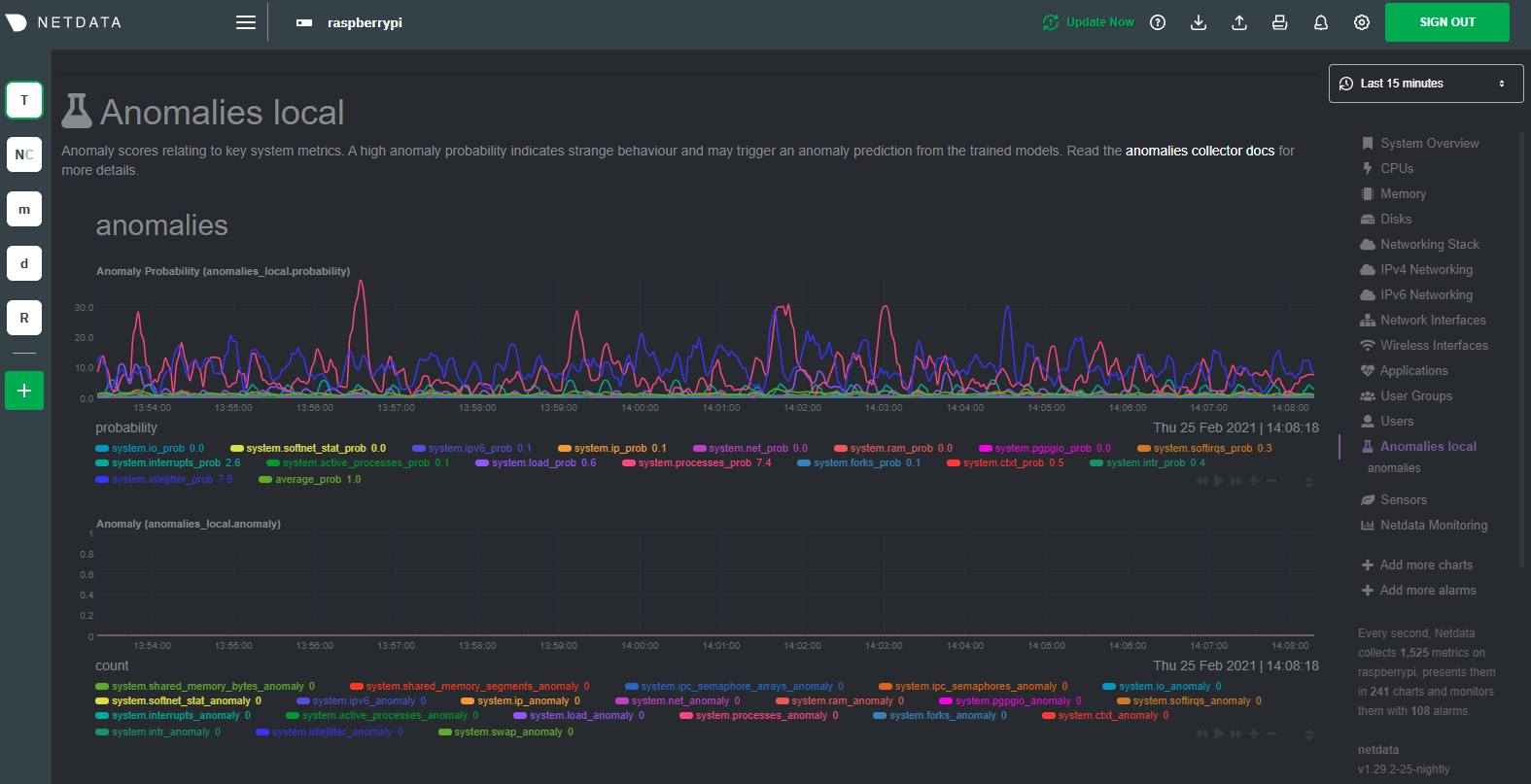| 123456789101112131415161718192021222324252627282930313233343536373839404142434445464748495051525354555657585960616263646566676869707172737475767778798081828384858687888990919293949596 |
- # Anomaly detection for RPi monitoring
- Learn how to use a low-overhead machine learning algorithm alongside Netdata to detect anomalous metrics on a Raspberry Pi.
- We love IoT and edge at Netdata, we also love machine learning. Even better if we can combine the two to ease the pain
- of monitoring increasingly complex systems.
- We recently explored what might be involved in enabling our Python-based [anomalies
- collector](/src/collectors/python.d.plugin/anomalies/README.md) on a Raspberry Pi. To our delight, it's actually quite
- straightforward!
- Read on to learn all the steps and enable unsupervised anomaly detection on your on Raspberry Pi(s).
- > Spoiler: It's just a couple of extra commands that will make you feel like a pro.
- ## What you need to get started
- - A Raspberry Pi running Raspbian, which we'll call a _node_.
- - The [open-source Netdata](https://github.com/netdata/netdata) monitoring agent. If you don't have it installed on your
- node yet, [get started now](/packaging/installer/README.md).
- ## Install dependencies
- First make sure Netdata is using Python 3 when it runs Python-based data collectors.
- Next, open `netdata.conf` using [`edit-config`](/docs/netdata-agent/configuration/README.md#edit-a-configuration-file-using-edit-config)
- from within the [Netdata config directory](/docs/netdata-agent/configuration/README.md#the-netdata-config-directory). Scroll down to the
- `[plugin:python.d]` section to pass in the `-ppython3` command option.
- ```text
- [plugin:python.d]
- # update every = 1
- command options = -ppython3
- ```
- Next, install some of the underlying libraries used by the Python packages the collector depends upon.
- ```bash
- sudo apt install llvm-9 libatlas3-base libgfortran5 libatlas-base-dev
- ```
- Now you're ready to install the Python packages used by the collector itself. First, become the `netdata` user.
- ```bash
- sudo su -s /bin/bash netdata
- ```
- Then pass in the location to find `llvm` as an environment variable for `pip3`.
- ```bash
- LLVM_CONFIG=llvm-config-9 pip3 install --user llvmlite numpy==1.20.1 netdata-pandas==0.0.38 numba==0.50.1 scikit-learn==0.23.2 pyod==0.8.3
- ```
- ## Enable the anomalies collector
- Now you're ready to enable the collector and restart Netdata.
- ```bash
- sudo ./edit-config python.d.conf
- # restart netdata
- sudo systemctl restart netdata
- ```
- And that should be it! Wait a minute or two, refresh your Netdata dashboard, you should see the default anomalies
- charts under the **Anomalies** section in the dashboard's menu.
- 
- ## Overhead on system
- Of course one of the most important considerations when trying to do anomaly detection at the edge (as opposed to in a
- centralized cloud somewhere) is the resource utilization impact of running a monitoring tool.
- With the default configuration, the anomalies collector uses about 6.5% of CPU at each run. During the retraining step,
- CPU utilization jumps to between 20-30% for a few seconds, but you can [configure
- retraining](/src/collectors/python.d.plugin/anomalies/README.md#configuration) to happen less often if you wish.
- 
- In terms of the runtime of the collector, it was averaging around 250ms during each prediction step, jumping to about
- 8-10 seconds during a retraining step. This jump equates only to a small gap in the anomaly charts for a few seconds.
- 
- The last consideration then is the amount of RAM the collector needs to store both the models and some of the data
- during training. By default, the anomalies collector, along with all other running Python-based collectors, uses about
- 100MB of system memory.
- 
|